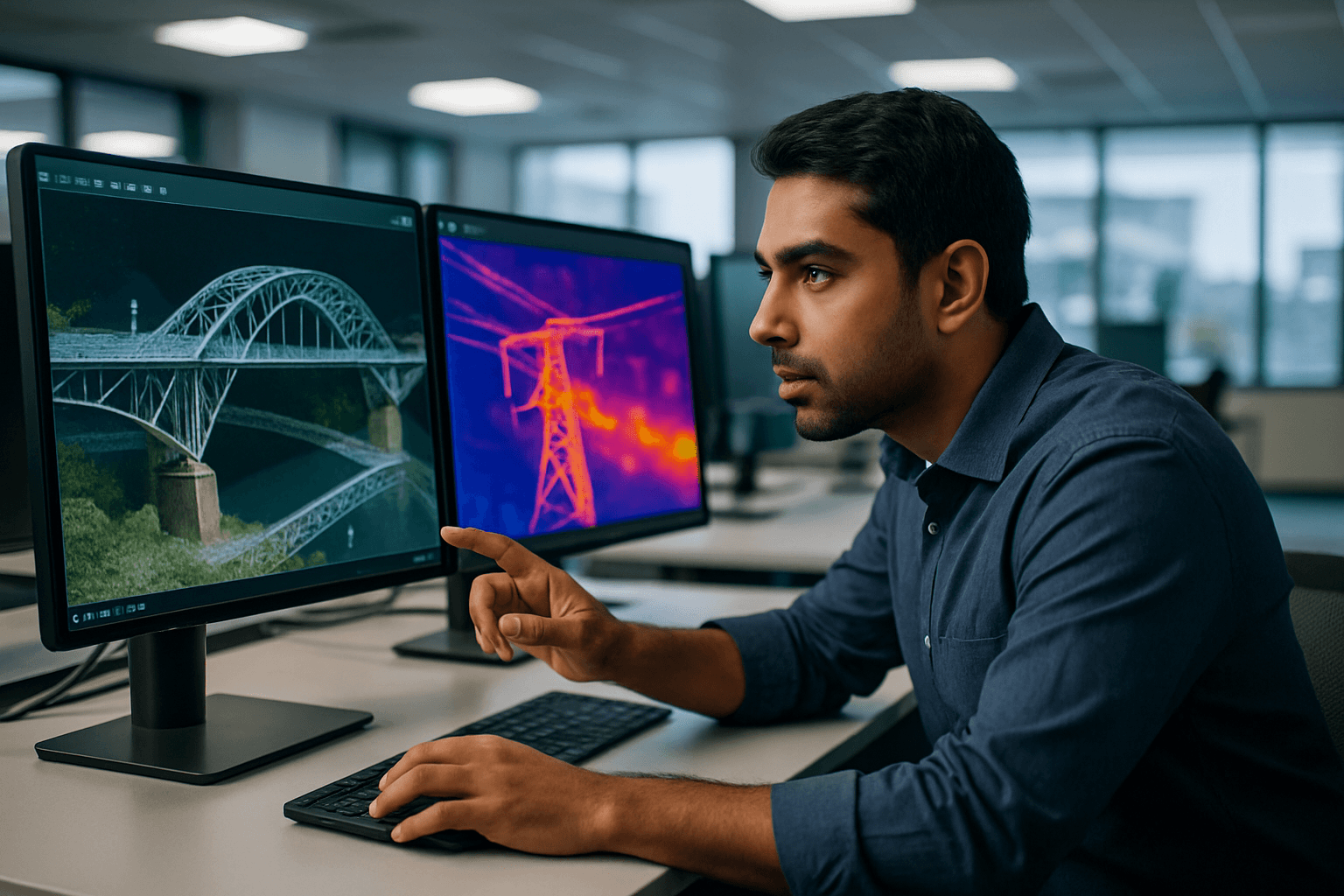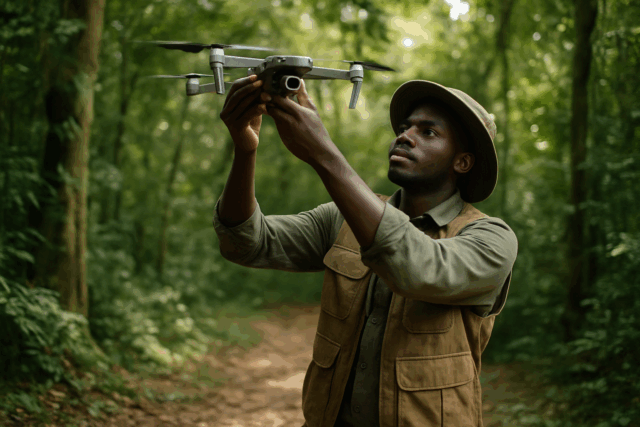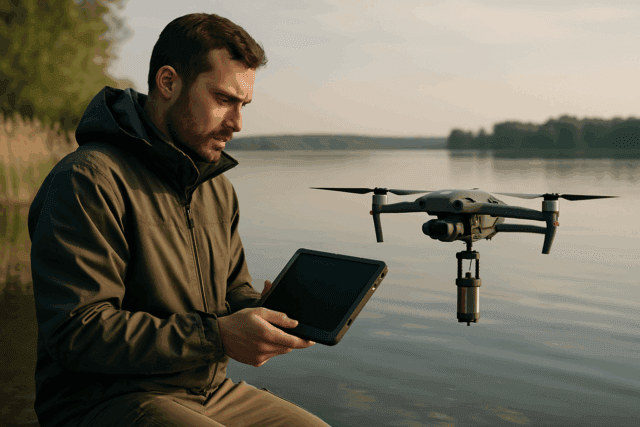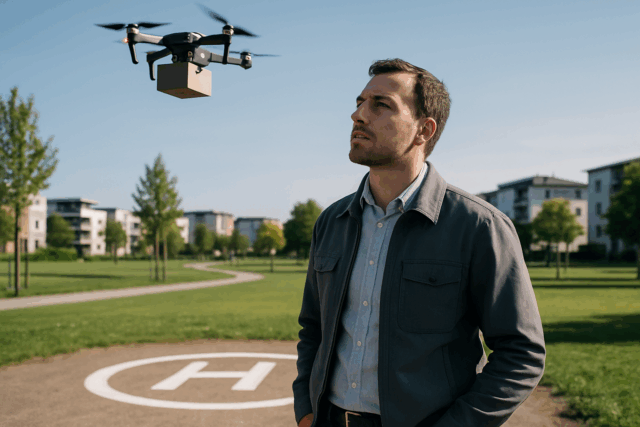The advent of drone technology has revolutionized infrastructure assessment, offering unprecedented efficiency, safety, and data quality compared to traditional manual inspection methods. Drones can capture high-resolution imagery, thermal data, and 3D models of critical infrastructure such as bridges, power lines, dams, and industrial sites, enabling detailed analysis and proactive maintenance. However, extracting actionable insights from this wealth of data requires a systematic approach to analysis.
The Drone Data Advantage in Infrastructure Inspection
Traditional infrastructure inspection methods often involve significant costs, time-consuming procedures, and considerable safety risks for personnel, especially when dealing with elevated structures or hazardous environments. Drones mitigate these challenges by providing a remote, real-time aerial view of assets, reducing the need for physical access and minimizing risks.
Key benefits include:
- Enhanced Safety: Drones eliminate the need for human inspectors to work in dangerous conditions, such as at heights, near energized equipment, or in confined spaces.
- Time and Cost Efficiency: Drone inspections are significantly faster and often more cost-effective than manual methods, reducing labor, equipment, and downtime.
- Richer, Real-Time Data: Equipped with advanced sensors like high-resolution RGB cameras, thermal imaging, and LiDAR, drones collect detailed, real-time information, allowing for early defect detection and informed decision-making.
- Unmatched Versatility: Drones can inspect a wide range of infrastructure, from bridge decks and power lines to wind turbines and dams, and can be custom-fitted with various payloads for specific use cases.
- Early Issue Detection: Drones can identify early defects and material degradation, enabling preventative maintenance and preventing minor issues from escalating into major, costly problems.
Types of Drone Data for Infrastructure Assessment
The type of data collected by drones depends on the sensors they carry, each offering unique insights into infrastructure health:
Visual Data (RGB Imagery)
High-resolution RGB cameras capture standard visible light images, providing detailed visual inspections of surface-level damage, cracks, spalling, corrosion, and other visible defects. Orthomosaic maps, created by stitching together thousands of individual photos, offer a geometrically corrected, consistent-scale aerial image of the entire inspected area, invaluable for measurements and change detection.
Thermal Data
Thermal cameras detect temperature variations, which can indicate electrical leaks, insulation problems, water infiltration, overheating in equipment, or subsurface anomalies. This is particularly useful for power lines, solar panels, and industrial sites.
LiDAR Data
LiDAR (Light Detection and Ranging) sensors create highly accurate 3D point clouds by emitting laser pulses and measuring the time it takes for them to return. This data is crucial for generating detailed elevation models, 3D models of structures, and for detecting vegetation encroachment near power lines.
Multispectral and Hyperspectral Data
While less common for standard infrastructure assessment, multispectral sensors can be used to monitor vegetation health (e.g., using Normalized Difference Vegetation Index or NDVI) which can be relevant for right-of-way monitoring around linear infrastructure like power lines or pipelines.
Key Steps in Analyzing Drone Data
Analyzing drone data for infrastructure assessment typically involves a multi-stage workflow, from data acquisition planning to advanced visualization and reporting.
1. Drone Data Acquisition Planning
Effective data analysis begins with meticulous planning of the drone flight. This includes determining the flight path, altitude, and ensuring comprehensive coverage of the area of interest to maximize data quality and minimize gaps. Factors such as GPS precision, camera calibration, and the chosen drone’s hardware (e.g., camera quality, sensor resolution) directly impact data accuracy. Real-Time Kinematic (RTK) and Post-Processing Kinematic (PPK) technologies can significantly boost GPS accuracy.
2. Data Processing
Once raw data is collected (images, videos, thermal scans, LiDAR point clouds), it needs to be processed to transform it into usable formats.
- Image Stitching and Orthorectification: Individual images are stitched together to create orthomosaic maps, correcting for perspective distortions and georeferencing them to real-world coordinates.
- 3D Model Generation: Photogrammetry software processes overlapping images to create detailed 3D models and point clouds of structures. LiDAR data is directly processed to generate 3D models and elevation models.
- Data Organization: Raw and processed data are organized and stored efficiently, often in cloud platforms for scalable storage and collaboration.
3. Data Analysis and Interpretation
This stage involves extracting meaningful insights from the processed data to assess infrastructure condition and identify potential issues.
- Visual Inspection: High-resolution orthomosaics and detailed images allow inspectors to visually identify cracks, corrosion, and other surface damage.
- Measurements: Tools within analysis software enable precise measurements of distances, perimeters, areas, and volumes from the imagery and 3D models.
- Change Detection: Comparing drone data collected at different times allows for the identification of changes, such as structural deformation, vegetation growth, or progress monitoring for construction projects.
- Thermal Anomaly Detection: Analysis of thermal images identifies hot spots or cold spots that may indicate electrical faults, leaks, or insulation issues.
- Structural Analysis: 3D models can be used to identify structural issues, assess wear and tear, and plan maintenance or repairs. This can include creating cross-sections or analyzing specific features for detailed examination.
- GIS Integration: Integrating drone data with Geographic Information Systems (GIS) platforms facilitates detailed mapping, spatial alignment, and historical tracking of assets.
4. Reporting and Visualization
The final step involves generating comprehensive reports and visualizations to communicate findings effectively to stakeholders. This can include annotated maps, 3D models, detailed defect reports, and temporal analysis showcasing changes over time.
Software and Tools for Drone Data Analysis
A variety of specialized software and AI tools are available to facilitate the processing and analysis of drone data for infrastructure assessment:
- Photogrammetry Software: Programs like Pix4D (e.g., PIX4Dmapper, PIX4Dmatic), DroneDeploy, and SimActive’s Correlator3D stitch images together to create orthomosaics, 2D maps, and 3D models. Autodesk also offers drone surveying software for processing data into detailed maps and 3D models.
- GIS Software: Geographic Information System (GIS) software, such as ArcGIS and QGIS, is crucial for working with spatial data, allowing for detailed mapping, spatial analysis, and integration with existing infrastructure management systems.
- AI and Machine Learning Platforms: AI and ML algorithms are increasingly used to automate defect detection, identify patterns and anomalies in high-resolution and thermal imagery, and streamline the analysis of large datasets. Examples include FlyPix AI and AI-powered analysis within platforms like DroneDeploy.
- Cloud Platforms: Cloud-based solutions are used for scalable data storage, processing, and team collaboration, enabling real-time insights and efficient data flow.
Challenges and Future Outlook
Despite the clear advantages, several challenges need to be addressed for widespread drone data adoption in infrastructure assessment. These include data security, compliance with flight regulations (especially for Beyond Visual Line of Sight, or BVLOS operations), the need for skilled pilots and data analysts, and ensuring interoperability between various software applications to avoid data silos. Weather conditions and signal robustness can also impact data collection quality.
However, the future of drone data analysis for infrastructure assessment looks promising. Continued advancements in drone technology, sensor capabilities, AI integration, and the development of digital twin technologies will further enhance efficiency, accuracy, and decision-making in infrastructure management. As drone services continue to expand, they are set to become an even more indispensable tool for ensuring the safety, reliability, and longevity of critical infrastructure worldwide.





